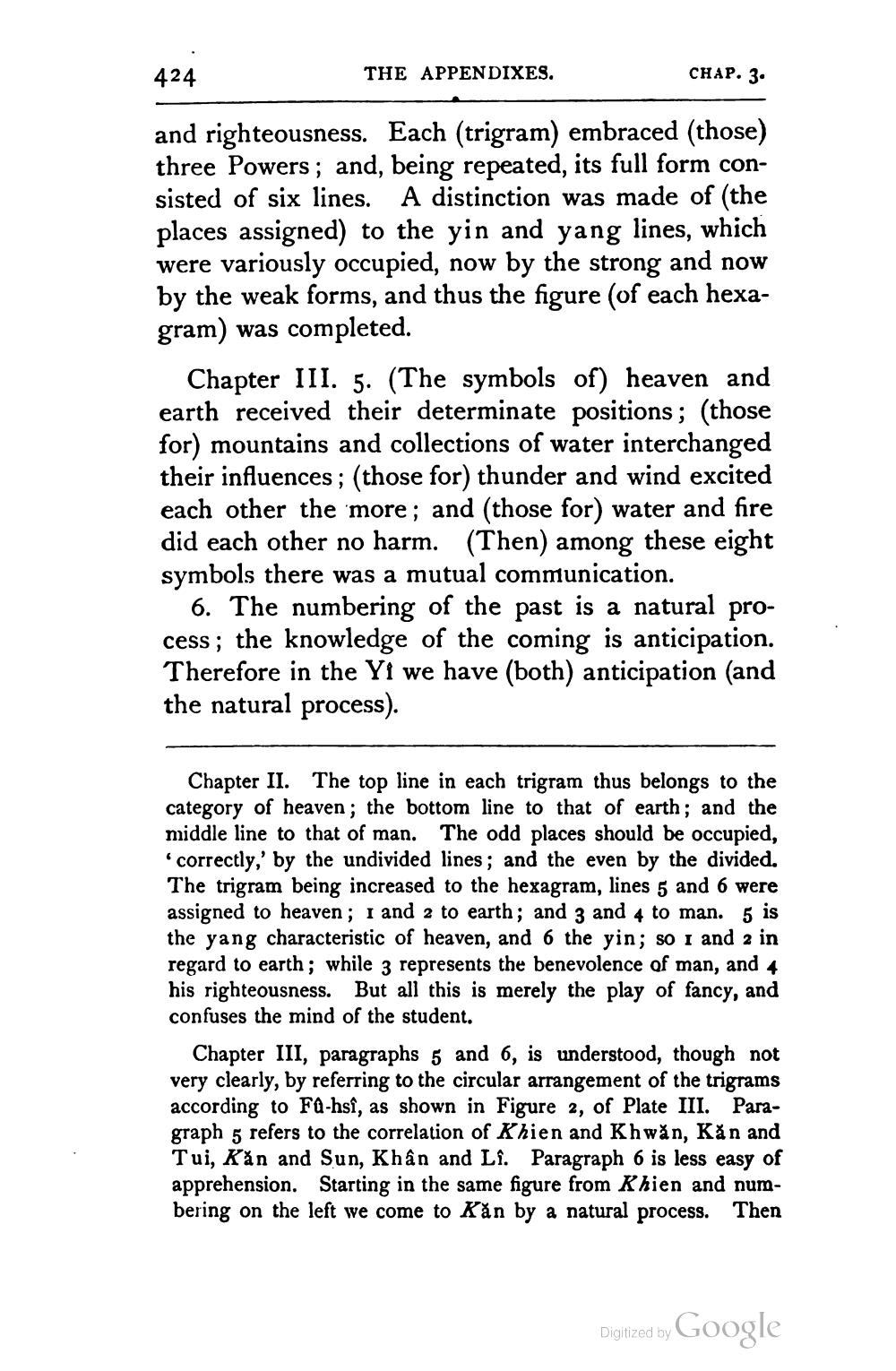________________
424
THE APPENDIXES.
CHAP. 3.
and righteousness. Each (trigram) embraced (those) three Powers; and, being repeated, its full form consisted of six lines. A distinction was made of (the places assigned) to the yin and yang lines, which were variously occupied, now by the strong and now by the weak forms, and thus the figure (of each hexagram) was completed.
Chapter III. 5. (The symbols of) heaven and earth received their determinate positions; (those for) mountains and collections of water interchanged their influences ; (those for) thunder and wind excited each other the more; and (those for) water and fire did each other no harm. (Then) among these eight symbols there was a mutual communication.
6. The numbering of the past is a natural process; the knowledge of the coming is anticipation. Therefore in the Yi we have (both) anticipation (and the natural process).
Chapter II. The top line in each trigram thus belongs to the category of heaven; the bottom line to that of earth; and the middle line to that of man. The odd places should be occupied, 'correctly,' by the undivided lines; and the even by the divided. The trigram being increased to the hexagram, lines 5 and 6 were assigned to heaven; 1 and 2 to earth; and 3 and 4 to man. 5 is the yang characteristic of heaven, and 6 the yin; so I and 2 in regard to earth; while 3 represents the benevolence of man, and 4 his righteousness. But all this is merely the play of fancy, and confuses the mind of the student.
Chapter III, paragraphs 5 and 6, is understood, though not very clearly, by referring to the circular arrangement of the trigrams according to Fa-hsi, as shown in Figure 2, of Plate III. Paragraph 5 refers to the correlation of Khien and Khwăn, Kån and Tui, Kån and Sun, Khân and Li. Paragraph 6 is less easy of apprehension. Starting in the same figure from Khien and numbering on the left we come to Kån by a natural process. Then
Digitized by Google




